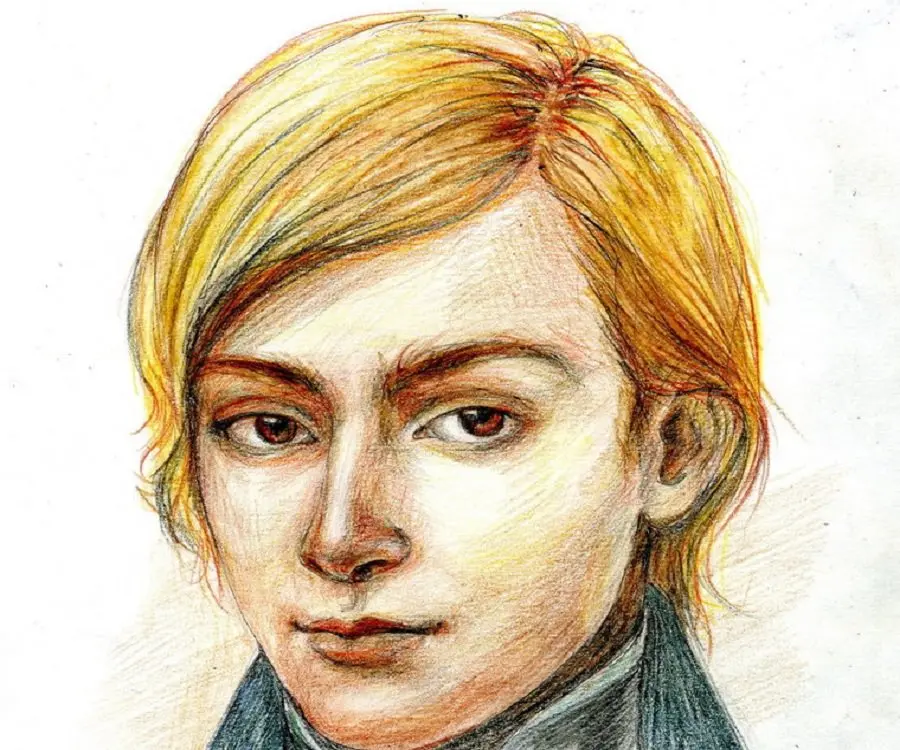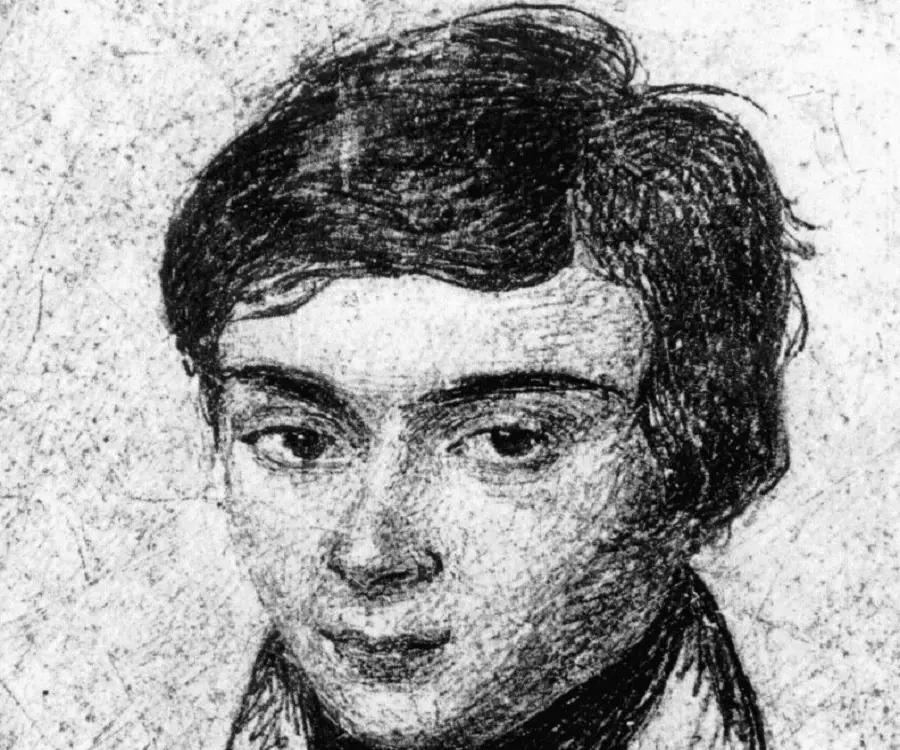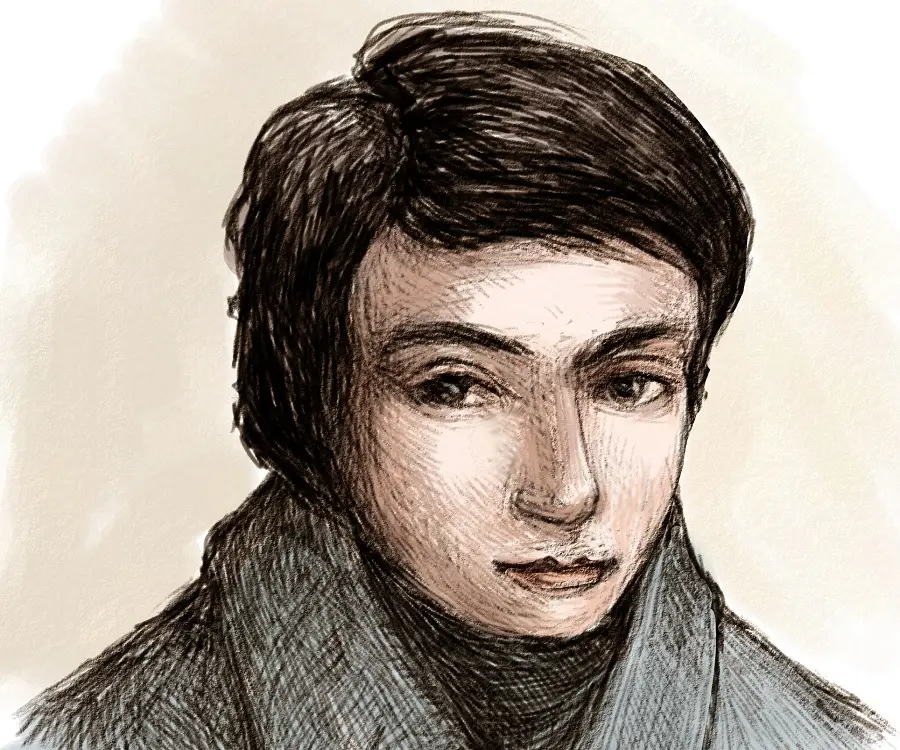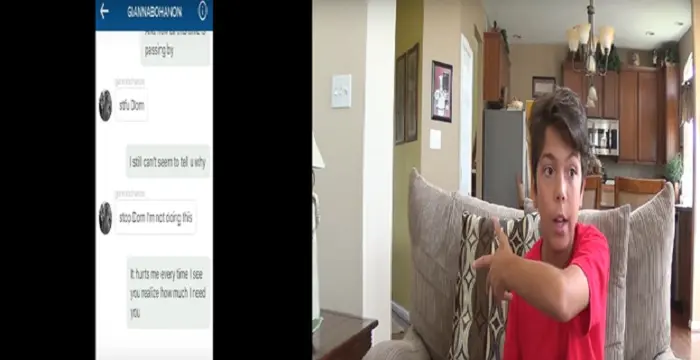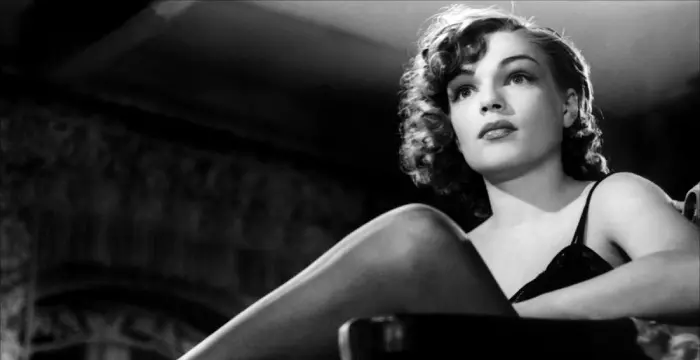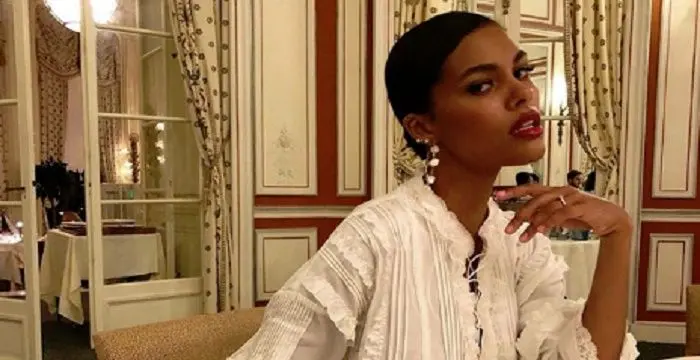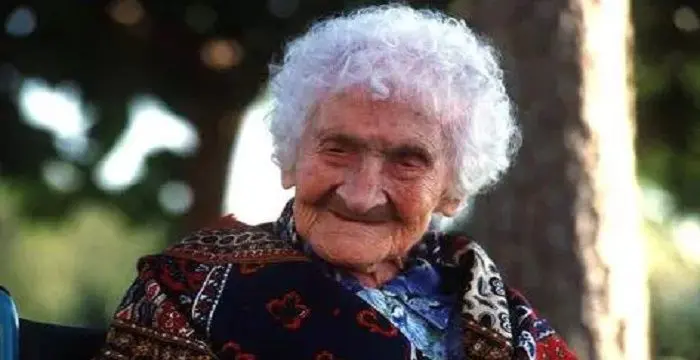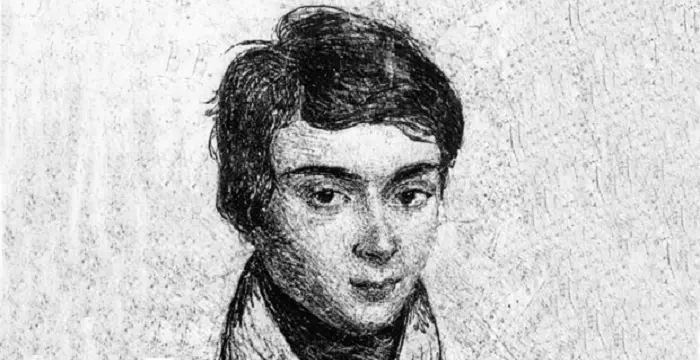
Évariste Galois - Scientists, Life Achievements and Facts
Évariste Galois's Personal Details
Evariste Galois was a great French mathematician who died at a young age of 20
| Information | Detail |
|---|---|
| Birthday | October 25, 1811 |
| Died on | May 31, 1832 |
| Nationality | French |
| Famous | Scientists, Mathematicians |
| Siblings | Alfred |
| Universities |
|
| Birth Place | Bourg-la-Reine, French Empire |
| Gender | Male |
| Father | Nicolas-Gabriel Galois |
| Mother | Adélaïde-Marie |
| Sun Sign | Scorpio |
| Born in | Bourg-la-Reine, French Empire |
| Famous as | Mathematician |
| Died at Age | 20 |
// Famous Mathematicians
Grigori Perelman
Grigori Perelman is a Russian mathematician who is best known for his contributions to Riemannian geometry and geometric topology. Check out this biography to know about his childhood, family life, achievements and fun facts about him.
Terence Tao
Terence Tao is an Australian- American mathematician who has contributed enormously to the field of mathematics. Check out this biography to know about his childhood, family life and achievements.
Isaac Newton
Isaac Newton was an English scientist and mathematician, who discovered gravitation and Newtonian Mechanics. Read this biography to find more on his life.
Évariste Galois's photo
Who is Évariste Galois?
Evariste Galois was one of the greatest mathematicians of all time. The ingenious mathematician died young; he lived a tragic but inspirational life. Regarded all over the world as the ‘Pioneer of Modern Algebra’, he laid the foundations of group theory, and continuously worked on abstract algebra, breaking numerous conventions to solve a long-standing, 350-year-old problem relating to polynomials. Possessing tremendous calibre and formidable brilliance, it is really unfortunate that he met his end at the young age of 20 in a duel. Known as a hopeless romantic, with a republican political background, his work was often met with resistance and was never acclaimed until after his death. Some considered him simply a political agitator and many of his caretakers and professors failed to understand his acuity and considered many of his theories incomprehensible. Yet perseverance led him on;with determination he proved the possibility of solving general quintic equations and polynomial equations of higher degree. His mastery in research and logical reasoning has consolidated his position in the field of mathematics.
// Famous Scientists
Juliane Koepcke
Juliane Koepcke is a German-Peruvian biologist, who was the lone survivor among the 92 passengers and crew of the ill-fated LANSA Flight 508 that crashed in the Peruvian rainforest on 24 December 1971. Know more about her life in this biography.
Henry Cavendish
Henry Cavendish was a theoretical chemist and physicist, renowned for discovery of hydrogen and calculation of the mass of earth. To know more about his childhood, profile, timeline and career read on
Konstantin Tsiolkovsky
Konstantin Tsiolkovsky was a Russian rocket scientist and a pioneer of astronautics. This biography provides detailed information about his childhood, family, personal life, career, achievements, etc.
Childhood and Early life
EvaristeGalois was born to Nicolas-Gabriel Galois and Adélaïde-Marie on 25 October 1811 in Bourg-la-Reine, French Empire. Both his parents were well educated and embraced liberal revolutionary principles.
His father was amiable and highly philosophical in nature;he directed a school educating about sixty boarders. He was later elected mayor of Bourg-la-Reine.
His mother, Adelaïde-Marie, was from a family of jurists and had received a more traditional education; she was well-versed in Latin and Classical Literature. She had a headstrong personality and was eccentric, even considered queer by many. Galois had a sister named Nathalie-Théodore and a brother called Alfred.
His mother took charge of his primary education. She sought to inculcate in him, along with the elements of classical culture and Literature, the principles of an austere religion.
She home schooled him until the age of 12. She was reluctant to educate him in school, yet she registered him at Louis-le-Grand in Paris for his first formal education in 1823.
At the time of his enrolment, the school was in great turmoil and around a hundred students were expelled, however Galois was retained. In his first year he showed great promise and he ranked first in Latin, owing to the excellent tutelage his mother had provided right from the start.
However, as he progressed, he developed a keen interest in mathematics and showed great tenacity towards the discipline; soon his lack of interest for classic literature led him to enrol in his first mathematics class under M. Vernie at the age of 14.
He studied Adrien-Marie Legendre’s works on geometry and ‘Joseph-Louis Lagrange’s writings on algebra as if he were “reading a novel” and mastered the content promptly. As a result of his inclination towards research, his class performance began to dip steadily.
Galois was gifted with the ability to carry out the most difficult mathematical calculations almost entirely in his head. This created resentment inhis teachers and classmates. They often couldn’t decipher his solutions and demanded for further explanation on details leaving him exasperated.
In 1828, he tried to pursue his vision of studying at the most reputed university of Paris and thus he took the examination of the ‘ÉcolePolytechnique’, but failed to clear it. The same year, he entered ‘ÉcoleNormale’, which was a compromise for him as it did not bear the same honour as the prior university.
Early Years as a Mathematician
In 1829, Galois published his first paper on ‘Continued Fractions.’ It was around the same that that he was researching on the ‘Theory of Polynomial Equations.’ He submitted two papers on the latter, one on 25May and the other on the 1June to ‘Académie des Sciences’.
A renowned mathematician of Académie des Sciences, Augustin Louis Cauchy reviewed his paper but refused to publish it for unknown reasons that many believe was a result of his jealousy.
However, contrary to most beliefs,Cauchy simply suggested that Galois combine both papers to make it a more comprehensive theory, so that it could be entered into the competition for the ‘Academy's Grand Prize in Mathematics’.
The Traumatizing Death of His Father
Evariste Galois suffered a major tragedy soon after. His father committed suicide on 2 July 1829 following a lethal argument with the priest of Bourg-la-Reine.
Apparently, the priest had forged Mayor Galois's name on libellous epigrams. Galois's father was a respectable man and the scandal was beyond his tolerance, thus he hanged himself to death. His father’s sudden demise had a shattering effect and stained his life for the years to come.
Repeated Attempts to seek Admission in â
With anguish, Evariste Galois tried his last attempt at the entrance examinations of ‘École Polytechnique’ since a pupil could not attempt these examinations more than twice.Unfortunately he failed yet again.
An account of the incident that led to his rejection points to the fact thatone part of the examination was an oral test where pupils were quizzed by two professors of the institution. But Galois's habit of working entirely in his head put him out of balance when he had to solve a mathematical problem on the blackboard.
During the oral exam one of the professors argued with Galois on his reasoning. The professor was stubborn and contradicted his own reasoning, but refused to agree with Galois’s explanation. This led to deep resentment and so in a rage the boy threw the board eraser at the professor.
Crisis Owing to the Revolution
Fatherless and with no stipend, Galois faced financial crisis owing to the ‘Revolution’. In order to sustain himself, he put up a notice in front of a grocery shop opposite the ‘Normale’, announcing a private class in higher algebra that would be conducted once every week.
Initially some students joined, but quickly found the subject way over their understanding, and therefore stopped attending his classes. Meeting retribution at every junction, he devoted all his time to revolutionary politics, and writing mathematical memoirs on higher algebra.
Later Years
In 1831, he presented his memoir on the theory of equations for the third time to the Academy. This time it was returned but with a negative report. The judges, who included Siméon-Denis Poisson, did not understand what Galois had written and believed that it contained a significant error.
Several of his papers were rejected on the basis of obscurity. Realising that he wouldn’t be able to publish a paper if he did not take it upon himself, he requested his friend Auguste Chevalier to help him and thus he published three papers with his assistance.
The night before the fatal duel, he put his collective pieces together and developed evidences for a few more theories. He filled up the blank spaces in the papers that were rejected and provided concrete evidences to solutions that lay incomplete for years.
He wrote a letter to Auguste Chevalier, leaving his work for him to publish. In the 60 odd pages of Galois' collected works are many important ideas that relate to nearly all branches of mathematics.
Major Works
In 1830 Cauchy suggested that Galois submit a new article on the condition that ‘an equation be solvable by radicals’ for the ‘Grand Prix of the Academy in Mathematics’. When he did, the paper was forwarded to Fourier, who was the secretary of the Paris Academy. By a stroke of misfortune, Fourier died the same year and the Galoispapers were misplaced and not considered for the award.
Despite being courted byill luck, he went on to publish three papers in 1830. One laid the foundations for ‘Galois Theory’. The second paper pertained to the numerical resolution of equations and the third was a significant work in number theory, where the concept of a finite field was articulated for the first time.
Personal Life & Legacy
Evariste Galois was challenged to a duel where he was shot in his abdomen on 30 May 1832. The practice of settling disputes by duels was very common those days in France. He died of his injuries the next day.
There are various theories about why the duel was called and why Galois accepted the duel. Some beliefs point to a State secret agent who called the duel between fellow republicans.
Another theory states that he was romantically involved with his physician’s daughter, Mademoiselle Poterin du Motel, and it was at her instigation that he challenged someone for a duel and as a result was killed.
He died the death of an anonymous person with an unmarked grave. It was only years after his death, when the letters and manuscripts that Galois wrote hours before he died were published that the world started revering Galois.
Trivia
Galois didn't receive any medical attention for many hours after he was shot;he could have been saved had medical aid arrived on time. Since he received no medical attention,he died a very slow and painful death.
// Famous Scorpio Celebrities peoples
Teddy Zois
Teddy Zois is an American Musical.ly star and social media personality. Let’s have a look at his family and personal life including age, date of birth, net worth, and fun facts.
Kyla Cole
Kyla Cole is a Slovak glamour model and former television presenter. This biography profiles her childhood, life, modeling career, achievements and timeline.
Dominic Tracy
Dominic Tracy is an American YouTube Star. Let’s take a look at his family & personal life including age, date of birth, girlfriends, net worth, and fun facts.
Évariste Galois biography timelines
- // 25th Oct 1811EvaristeGalois was born to Nicolas-Gabriel Galois and Adélaïde-Marie on 25 October 1811 in Bourg-la-Reine, French Empire. Both his parents were well educated and embraced liberal revolutionary principles.
- // 1823She home schooled him until the age of 12. She was reluctant to educate him in school, yet she registered him at Louis-le-Grand in Paris for his first formal education in 1823.
- // 1828In 1828, he tried to pursue his vision of studying at the most reputed university of Paris and thus he took the examination of the ‘ÉcolePolytechnique’, but failed to clear it. The same year, he entered ‘ÉcoleNormale’, which was a compromise for him as it did not bear the same honour as the prior university.
- // 1829In 1829, Galois published his first paper on ‘Continued Fractions.’ It was around the same that that he was researching on the ‘Theory of Polynomial Equations.’ He submitted two papers on the latter, one on 25May and the other on the 1June to ‘Académie des Sciences’.
- // 1829Evariste Galois suffered a major tragedy soon after. His father committed suicide on 2 July 1829 following a lethal argument with the priest of Bourg-la-Reine.
- // 1830In 1830 Cauchy suggested that Galois submit a new article on the condition that ‘an equation be solvable by radicals’ for the ‘Grand Prix of the Academy in Mathematics’. When he did, the paper was forwarded to Fourier, who was the secretary of the Paris Academy. By a stroke of misfortune, Fourier died the same year and the Galoispapers were misplaced and not considered for the award.
- // 1830Despite being courted byill luck, he went on to publish three papers in 1830. One laid the foundations for ‘Galois Theory’. The second paper pertained to the numerical resolution of equations and the third was a significant work in number theory, where the concept of a finite field was articulated for the first time.
- // 1831In 1831, he presented his memoir on the theory of equations for the third time to the Academy. This time it was returned but with a negative report. The judges, who included Siméon-Denis Poisson, did not understand what Galois had written and believed that it contained a significant error.
- // 30th May 1832Evariste Galois was challenged to a duel where he was shot in his abdomen on 30 May 1832. The practice of settling disputes by duels was very common those days in France. He died of his injuries the next day.
// Famous French peoples
Simone Signoret
Simone Signoret was a French actress who became the first French person to win an Academy Award. Check out this biography to know about her childhood, family life, achievements and other facts related to her life.
Jade Weber
Scroll down this bio to find out everything about French model Jade Weber. Be it fun facts, birthday, trivia or details of her personal and family life, you’ll find everything here.
Micheline Roquebrune
Micheline Roquebrune is a petite Moroccan-French painter best known as the third wife the legendary Scottish actor Sir Sean Connery. Check out this biography to know about her birthday, childhood, family life, achievements and fun facts about her.
Alex Lange
Alex Lange is a French-South African model, who is quite popular on Instagram. Check out this biography to know about his childhood, family life, achievements and fun facts about him.
Tina Kunakey
Tina Kunakey Di Vita is a model and wife of the French actor Vincent Cassel. Check out this biography to know about her birthday, childhood, family life, achievements and fun facts about her.
Jeanne Calment
Jeanne Calment was a French supercentenarian who had the longest confirmed lifespan in human history. Check out this biography to know about her childhood, family, personal life, death, etc.
Évariste Galois's FAQ
What is Évariste Galois birthday?
Évariste Galois was born at 1811-10-25
When was Évariste Galois died?
Évariste Galois was died at 1832-05-31
Where was Évariste Galois died?
Évariste Galois was died in Paris, Kingdom of France
Which age was Évariste Galois died?
Évariste Galois was died at age 20
Where is Évariste Galois's birth place?
Évariste Galois was born in Bourg-la-Reine, French Empire
What is Évariste Galois nationalities?
Évariste Galois's nationalities is French
Who is Évariste Galois siblings?
Évariste Galois's siblings is Alfred
What was Évariste Galois universities?
Évariste Galois studied at École Normale Supérieure, Lycée Louis-le-Grand
Who is Évariste Galois's father?
Évariste Galois's father is Nicolas-Gabriel Galois
Who is Évariste Galois's mother?
Évariste Galois's mother is Adélaïde-Marie
What is Évariste Galois's sun sign?
Évariste Galois is Scorpio
How famous is Évariste Galois?
Évariste Galois is famouse as Mathematician



